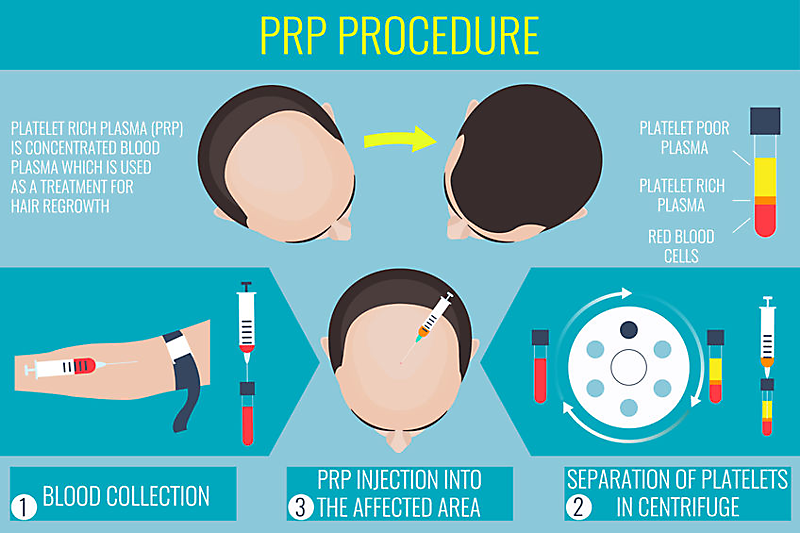ALOPECIA: PRP Hair Restoration for Men
Stand Out From the Crowd

Is your hair thinning? Worried you’ll end up bald or needing a hairpiece? Worry no more. PRP hair treatments for men can bring dormant follicles back to life, restoring your full head of hair and filling back in those thinning spots.

Be the first to know about new Specials, and blog posts with valuable free information on skin care, beauty and wellness. Sign up below and you'll receive an email notice of new specials as well as new posts. You can unsubscribe at any time.
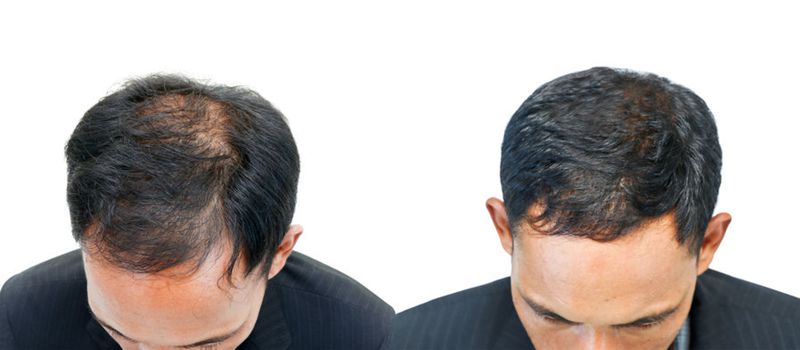
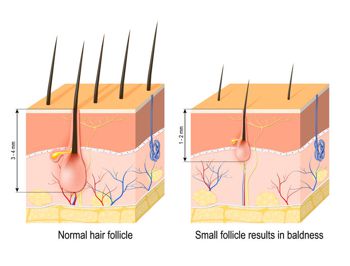
Alopecia is often the result of shrinking hair follicles, usually from male pattern baldness although women can suffer from thinning hair as well. Keep reading this article to find out why the follicles shrink and stop growing hair.
The medical definition of alopecia is uncharacteristically simple and understandable: “the partial or complete absence of hair from areas of the body where it normally grows; baldness”. While most of us would be quite happy to see alopecia taking effect on certain areas of our body, the one area where we definitely don’t want to see it is on our scalp. If you’re reading this article, we can probably assume that you or someone you know is losing their hair. Male pattern baldness, female pattern baldness (yes, there is such a thing) and alopecia areata can all cause us considerable distress over our appearance. Fortunately, there are effective treatments available. One of the most promising to come along in recent years is PRP therapy.
What is a Platelet?
PRP stands for Platelet Rich Plasma. It uses your own cells to stimulate hair growth and for many patients, it is remarkably effective. So what’s a platelet? Platelets are the smallest of our blood cells. Under a microscope, they are colorless and shaped like little plates – thus the name. When we get an injury, a cut, for example, platelets help heal us. They bind together over the wound to form a scab. The platelets do this by secreting three different proteins that act as a kind of glue to bind cells together.
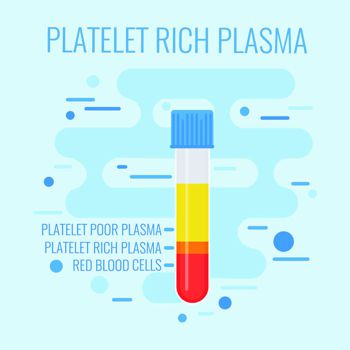
A small amount of blood will be withdrawn from your arm. This blood is spun in a centrifuge which separates the red blood cells from the plasma, and platelet poor plasma from platelet rich plasma (PRP).
The scab is a lot more than a just a seal for the wound that protects us from infection. It’s actually a cellular framework our body uses like a kind of scaffold for growing new healthy tissue to repair the damage.
How Does PRP Therapy Work?
A PRP treatment involves withdrawing a small amount of your blood, then spinning it in a centrifuge to separate it into layers. The largest layer will be plasma. Plasma is a protein-salt solution that makes up about 54% of our blood volume. It’s the medium that our red cells, white cells, and a number of other types of cells float around in. It also provides the nutrients that our cells need to function. The bottom layer will be comprised of red blood cells. Red cells are the most numerous of our blood cells and will make up another 45%. For those of you doing the math, that leaves 1% left for platelets and white blood cells.
This thin layer is then separated from the other layers and loaded into syringes. The solution consists of a high concentration of your own platelets in a small amount of plasma. The plasma is necessary to act as a carrier for the platelets. This resulting injectable solution is exactly what it’s called: Platelet Rich Plasma, or PRP.
PRP For Hair Loss
So how does any of that help those of us with thinning hair to stimulate new hair growth?
Platelets do a lot more than just bind together to seal a wound. They contain over 30 proteins that our body uses to heal, and seven protein growth factors that accelerate healing. To discuss the actual process by which PRP facilitates healing and growth would require a book. All we really need to know to answer the question of how PRP treats alopecia is that it amplifies our body’s natural healing processes many times over. Among other things, platelets reduce inflammation, enhance cell growth and activate the healing of both soft tissues and bone.
In addition, while it has not been conclusively proven, some studies show that PRP treatments stimulate stem cells to create new follicles!
What Causes Alopecia?
Losing hair is normal. In fact, both men and women typically lose about 100 hairs per day. We don’t notice this when we’re younger because our body is replacing them at the same rate. Certain conditions can cause hair loss at any age, and most of us will experience alopecia to some degree as we age. Causes include stress, pregnancy, and over-styling, as well as some medications and medical conditions. However, most hair loss is hereditary. If you’re a man and your father went bald, chances are you will too. And it’s extremely common. Past age 50, you have a greater than 50% chance of developing male pattern baldness. 95% of hair loss in men is due to male pattern baldness.
Similarly, if you’re a woman and your mother experienced female pattern baldness (most noticeable in the early stages as a widening of the part), you will likely develop the same condition. Roughly 50% of women over 50 will experience a thinning of their hair that gradually worsens as they age. To make matters worse, some women will develop male pattern baldness.
Understanding what’s happening at the biological level is key to understanding how PRP therapy can successfully treat both conditions.
Male Pattern Baldness: What Causes It?
The answer has a lot to do with what makes us men in the first place, biologically anyway. Men have more androgens than women. Androgens are hormones like DHT and testosterone that are responsible for typical male traits such as a deeper voice, more body hair and higher muscle mass. You’ve almost certainly heard of testosterone, but what’s DHT? DHT stands for dihydrotestosterone. Think of DHT as super-testosterone. It’s much more potent than testosterone. It attaches to the same chemoreceptors but more easily and once there it stays bound longer. An enzyme called 5-alpha-reductase (5-AR) converts testosterone into DHT. Normally, about 10% of total testosterone is converted.
DHT is Cruel
DHT causes the hair on a man’s body to grow but inhibits hair growth on his head. Without going into a very long and involved explanation, over time DHT causes scalp hair follicles to shrink and the growth phase of individual hair follicles (the Anagen phase) to shorten. Around the age of 50, this manifests as a noticeable thinning of the hair. Of course, some men may experience this at a younger or older age. The effect of DHT on body hair is the reason why older men start developing noticeable hair growth in some very undesirable places, such as ears, nose, and eyebrows at the same time they are losing hair on their head. Cruel, isn’t it?
In time, growth from the affected follicles stops entirely, and baldness and thinning hair result. The good news is that the follicles aren’t dead, just dormant. By injecting PRP into the scalp, the healing factors of platelet-rich plasma can stimulate new hair growth by reviving these dormant follicles. They do this through the action of the healing and accelerating proteins that PRP is saturated with. And because this is your own plasma and platelets, there’s zero risk of rejection.
Female Pattern Baldness
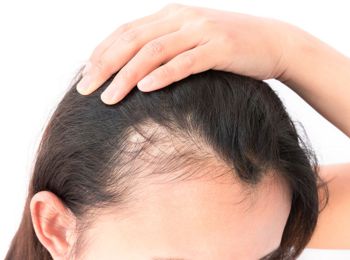
Sadly science hasn't figured out yet what causes female pattern baldness, but fortunately we do know that PRP therapy is an effective treatment for many women.
Bad news, ladies. Science hasn’t yet figured out why this happens. Some women develop male pattern baldness and the theory is that they have higher than normal levels of testosterone. See the previous section on male pattern baldness to understand what’s going on in this case. Others of us simply experience a thinning of our hair as we age. Left unchecked, this can progress to the point where we can end up almost as bald as some men. Yikes!
Fortunately, PRP therapy can treat both female pattern baldness and male pattern baldness in women. As with baldness in men, though, the follicles aren’t dead, just dormant. The healing proteins in PRP can revive women’s follicles in the same way that they do for men.
Alopecia Areata
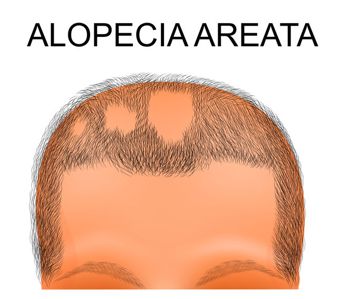
Alopecia areata is an autoimmune disorder that causes circular bald spots about the size of a quarter. Usually affecting people under 30, it is most often a temporary condition that will go away on it's own. PRP therapy can speed recovery and regrowth of the lost hair.
Some people are unfortunate enough to be affected by a condition called alopecia areata (AR). This causes the hair to fall out in patches, usually round and about the size of a quarter. Obviously, this is very unattractive and anyone suffering from this condition will find ways to keep their head covered at all times. Alopecia areata is also quite common, affecting approximately 6.8 million people in the U.S. It can affect us at any age or gender, although most often this condition occurs before age 30.
AR is an autoimmune disorder, which means that the body attacks itself. While there is no cure for AR, in most cases the condition is temporary and the hair will regrow in time. Sometimes though it needs help and in all cases PRP therapy can speed hair growth in the affected areas.
If you’re affected by this condition and want to know more about the effectiveness of PRP therapy, there is an excellent scientific study published here. Don’t worry. The abstract is fairly short and not completely impenetrable to anyone without a medical degree.
PRP Therapy at MagnifaSkin
We’re proud to have effectively helped many of our patients, both men and women, regrow hair lost due to alopecia. While results cannot be guaranteed, most patients experience some regrowth and in some cases the results are dramatic.
A single treatment usually takes less than an hour. We use a local anesthetic and most patients report minimal discomfort from the injections. You may experience minor swelling and tenderness for three to five days following treatment.
Most patients will respond well to only two or three treatments received four weeks apart. You’ll need maintenance treatments every one to two years thereafter to maintain the results.
While new hairs usually begin to grow around two weeks after the first treatment it will, of course, take some time for these hairs to grow long enough to thicken your hair. In addition to new hair, individual hairs will thicken and growth overall may accelerate in some cases. Most patients can see a noticeable difference in hair thickness three to six months after the initial treatment.
Contact us for a free consultation.
If you're curious about PRP skin rejuvenation, you can learn about that here.


